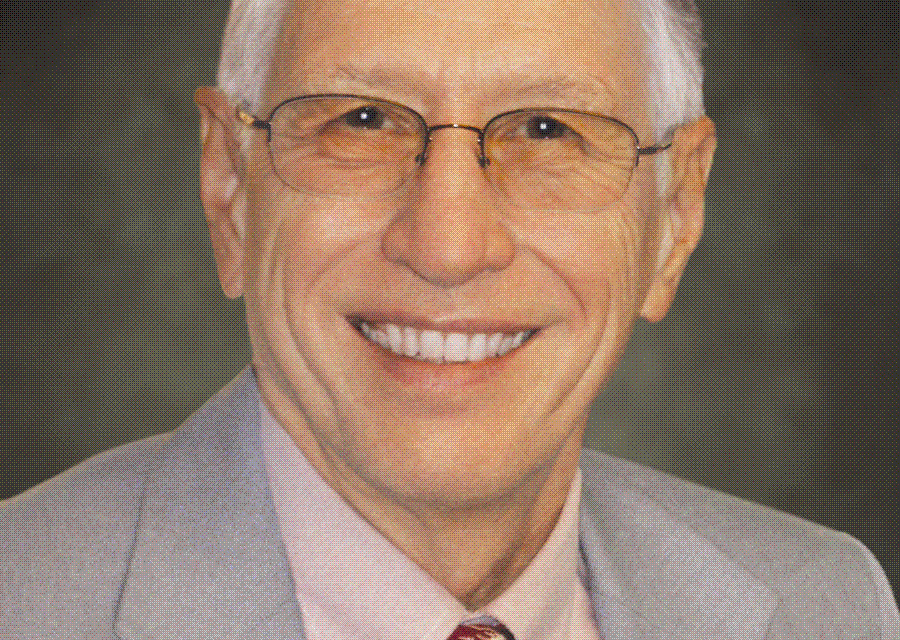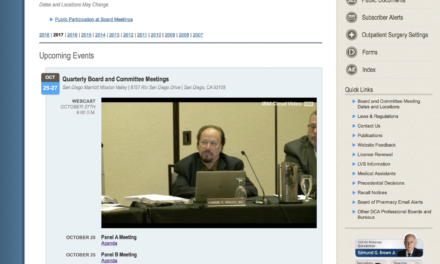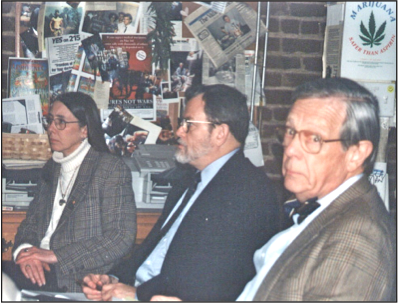By Fred Gardner “It’s nice to win one for a change,” said Stephen Robinson, MD, as we headed for hot, flat Sacramento August 30 to attend a meeting of the Medical Board of California’s Cannabis Task Force. He was referring to the MBC’s posting a few days earlier of draft “Guidelines for the recommendation of cannabis for medical purposes.” The Task Force had chosen not to adopt several provisions recommended by the Federation of State Medical Boards that Robinson had decried as onerous on behalf of the Society of Cannabis Clinicians.
One provision rejected by California’s board —now adopted by many other state boards—prevents cannabis-approving physicians from using cannabis themselves, even as medicine. Another provision would have stopped doctors from collaborating with dispensaries and cultivators on research projects.
On the ride home Dr. Robinson’s mood was no longer up-beat, however. Among the handouts provided by the Task Force was an “Agreement” that California physicians are advised to make their pain patients sign when authorizing cannabis use. The “Agreement” will be provided to physicians along with the Guidelines that the full board is set to approve at its next meeting (October 26-27 in San Diego). Robinson saw onerous provisions in it.
In recent weeks, members of the Society of Cannabis Clinicians have raised specific objections to the “Agreement” in emails to O’Shaughnessy’s. They are aggregated here. The draft of a letter by Jeffrey Hergenrather asks the medical board not to promote the “fear-inducing ‘Agreement.'”
Not all SCC members disparage the “Agreement.” La Jolla Pain Management Specialist Nancy Sajben, MD, was appreciative, commenting:
“These agreements are quite traditional when considering prescription opioids for pain. We cannot assume patients understand safe use.
“It covers the bases specified by law and would reassure many of the patients I see who are afraid to use it and allows some legal protection to an MD.
“There is no substitute for regular followup as required for monthly opioid prescriptions, but that is not usually possible with prescriptions for MMJ.”
Other SCC members think that a document signed by patients will protect them legally and that few patients will take the verbiage seriously. No harm, no foul.
Dr. Sajben, as a pain management specialist, is atypical among cannabis consultants. Cannabinoids are vastly safer than opioids. Cannabis is not addictive (or constipating). The old vernacular distinction between “hard drugs” and “soft drugs” was reality-based and useful. Cannabis is in the latter category and no “Agreement” to promote compliance by patients using it medicinally is called for or appropriate.
As for the doctors who are critical of the “Agreement,” I think the changes they’re proposing are sensible, but they’re missing the forest for the trees. The “Agreement” is outrageous and unacceptable because it is not an agreement at all, it’s a one-sided Promise To Behave on the part of the patient.
Webster’s 2nd International defines an agreement as “an exchange of promises; mutual understanding, arrangement, or stipulation.” There is nothing “mutual” about the document the med board plans to provide. The physician acknowledges nothing, promises nothing, agrees to nothing.
“The Medicinal Cannabis Treatment Agreement: Providing Information to Chronic Pain Patients via a Written Document” by Wilsey et al was published in the Clinical Journal of Pain: December 2015. It emphasizes the potential harmfulness of cannabis. The “Agreement” has 12 “tenets” and the paper explains the importance of each. Igor Grant, MD, director of the Center for Medical Cannabis Research at UC San Diego, is a co-author.
Wilsey et al state that they “borrow from concepts developed in the prescription of opioids.” As if the risks posed by cannabis and opiate use were equivalent! “Regrettably,” they add, “the widespread adoption of opioids was undertaken while harmful effects were minimized; obviously, no one wants to repeat this misstep.”
That is chutzpah squared! Prominent members of a psychiatric establishment that downplayed the risk of addiction in connection with Percocet, Hydrocodone and Fentanyl now pledge not to downplay the risks of of cannabis use!
Wilsey et al wrote in the Clinical Journal of Pain, “As more individuals gain access to this botanical product through state ballot initiatives and legislative mandate, the pain specialist is likely to be confronted by patients either seeking such treatment where permitted, or otherwise inquiring about its potential benefits and harms…”
Boldface added. What a revealing word choice by the psychiatrist/authors! A non-Freudian slip!
The paper by Wilsey et al begins with a long paragraph that conflates the use of opiods and cannabinoids, endorses urine testing for cannabinoids as well as opioids, and provides a “confrontation” scenario:
“When prescribing opioid therapy, written informed consent via treatment agreements are implemented to minimize abuse liability. These agreements commonly specify that one prescribing physician will provide the opioids, with subsequent follow-up of efficacy, adverse events, and functional status. A corollary to the one physician rule is that controlled substance prescriptions should be filled at the same pharmacy. In addition, random urine drug screens and state prescription drug monitoring reports may be alluded to in the agreement. They are designed to help determine if the patient is taking other substances and to monitor the patient’s medication use patterns. A drug screen may provide the first indication that a patient is using cannabis. Subsequently, a confrontation between the clinician and patient may ensue as to whether or not opioids should be continued concurrently with cannabis. This is probably not an uncommon event; the prevalence of cannabis use among patients prescribed chronic opioid therapy ranges from 6.2% to 39%; compared with 5.8% in the general population.
Restoring the MD’s ‘Parental Role’
“Successful doctor-patient relationships are characterized by candor and trust,” Tod Mikuriya, MD, wrote soon after California voters legalized cannabis for medical use in 1996. “Removing the stigma of criminality promotes candor and trust.”
Mikuriya thought that the doctor’s “parental role” in the traditional doctor-patient relationship was counter-productive. The written “Agreement” that might be imposed on cannabis-using patients re-enforces the doctor’s “parental role.” Mikuriya was writing in reference to patients substituting cannabis for alcohol, but his approach applies to pain patients seeking to reduce opiate use:
“Treating alcoholism by cannabis substitution creates a different doctor-patient relationship. Patients seek out the physician to confer legitimacy on what they are doing or are about to do. My most important service is to end their criminal status —Aeschlapian protection from the criminal justice system— which often brings an expression of relief. An alliance is created that promotes candor and trust. The physician is permitted to act as a coach —an enabler in a positive sense.”
Why it’s so important
The MBC’s fear-inducing “Agreement” re-enforces the notion of cannabis as a dangerous drug, easily abused. This inflated dangerousness “justifies” the complex, onerous regulations that politicians at the state and local levels have been enacting in California. The bureaucrats and law enforcers would not have been able to turn legal marijuana into a job creator and moneymarker for themselves if the medical establishment characterized its safety profile as relatively benign, akin to that of coffee.
The whole complex structure of marijuana regulation and taxation rests on its characterization as a dangerous drug. Who but the medical establishment could put that one over on the American people?
CMCR director Igor Grant, MD, is a psychiatrist who has been amply funded throughout his career by the National Institute of Drug Abuse (NIDA). The “Agreement” he is pushing is really a political document, not a scientific paper (for all its footnotes). It is a warning to every patient to whom it is presented that cannabis, though apparently beneficial, can be very harmful.
Tod thought that a patient getting a cannabis recommendation was effectively joining a movement —the medical marijuana movement, in all its aspects— and that the physician was functioning as an organizer. It’s why he pushed himself so hard holding ad hoc clinics up and down the state in the years after Prop 215 passed.
Igor Grant also understands that the discussion between physician and patient regarding cannabis provides a chance to advance a point of view. Tod’s POV was more egalitarian, less parental.





